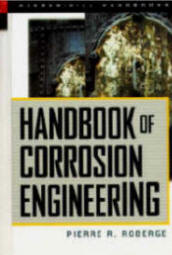Mechanical engineering is an engineering discipline that involves the application of principles of physics for analysis, design, manufacturing, and maintenance of mechanical systems. It requires a solid understanding of key concepts including mechanics, kinematics, thermodynamics and energy.
This Book actually contain 20 chapter of Mechanical Engineering section such us :
Mechanic Of Solid
Engineering Thermodynamic
Fluids Mechanics
Heat And Mass Transfer
Electrical Engineering
Mechanical System Control
Energy Resources
Energy Conversion
Air Conditioning and refrigeration
Electronic Packaging
Transportation
Engineering Design
Material
Modern Manufacturing
Robotics
Computer Aided Engineering
Environmental Engineering
Engineering Economic and Project Engineering
Communication and Information System
Mathematics
Patent Law
at this post you will find some, the other section will post soon.
Cover and Table of Content
Download
Mechanic Of Solids
Solid Mechanics is the study of load carrying members in terms of forces, deformations, and stability. In this book, we take the continuum mechanics approach, where we take the material properties to be the same even when we consider infinitesimal areas and volumes
Download
Thermodynamic Book
Thermodynamics (from the Greek θερμη, therme, meaning "heat", dunamis, meaning "power") is a branch of physics that studies the effects of changes in temperature, pressure, and volume on physical systems at the macroscopic scale.
heat means "energy in transit" and dynamics relates to "movement" thus, in essence thermodynamics studies the movement of energy and how energy instills movement
Download
Fluid Mechanics Book
Fluid of Mechanics,By definition, a fluid is a material continuum that is unable to withstand a static shear stress. Unlike an elastic solid which responds to a shear stress with a recoverable deformation, a fluid responds with an irrecoverable flow.
Fluid mechanics is the subdiscipline of continuum mechanics that studies fluids, that is, liquids and gases. It can be further subdivided into fluid statics, the study of fluids at rest, and fluid dynamics, the study of fluids in motion. Modern applications use the computational approach to develop solutions to fluid mechanics problems; the discipline concerned with this is the CFD, Computational Fluid Dynamics.
Download
Heat and Mass Transfer Book
the discipline of heat transfer is concerned with only two things: temperature, and the flow of heat. Temperature represents the amount of thermal energy available, whereas heat flow represents the movement of thermal energy from place to place.
Download
Mechanics System Control
this book contain of, human machine interaction,Control of Mechanical system,Control system analysis, system design and application, Advanced control, using fuzzy logic and Neural Network system.
Download
Read more...



